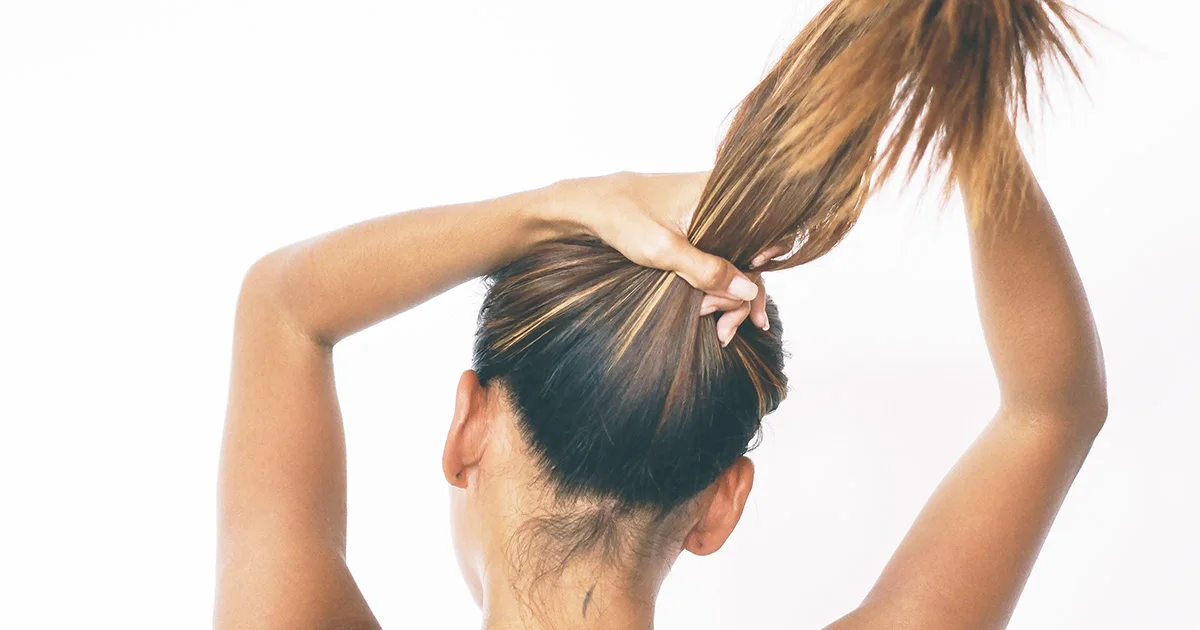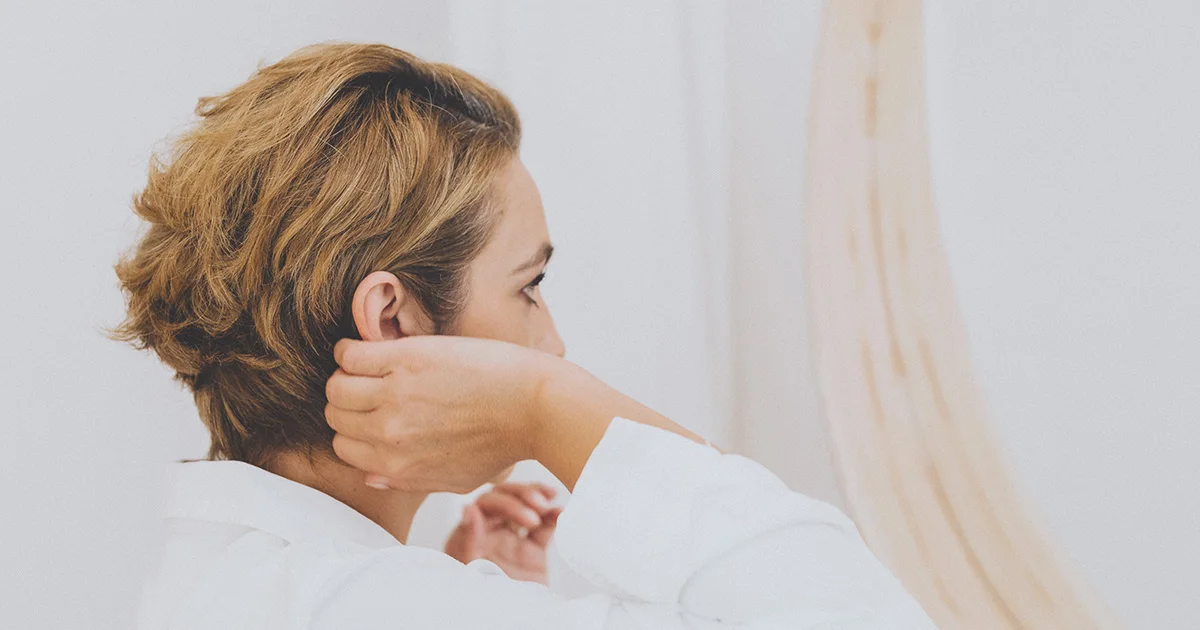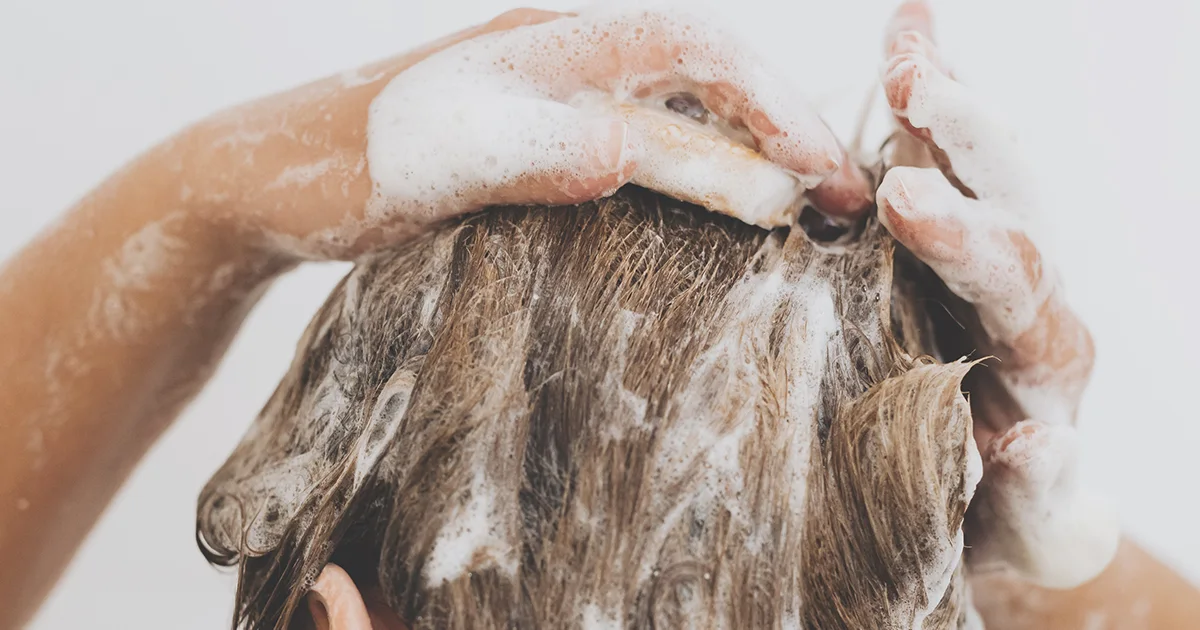Here's what we'll cover
Here's what we'll cover
It’s normal to see full-length club hairs in your comb or on your pillow. If you’ve never heard of a club hair, it’s when hair reaches the end of its growth cycle. As strands of hair form, they push out club hairs to make space for new hair to grow in.
Club hairs are a natural part of the hair growth cycle. Here’s how these hairs form and what it means if you have too many.
What is a club hair?
A club hair is a normal, fully formed strand that has stopped growing. It’s named for the bulbous, club-like appearance at the end of the hair where keratin has built up. Club hairs appear in the catagen phase of the hair growth cycle, which is a transitional phase between growth and resting (Hoover, 2021).
How does hair grow?
The scalp holds about 100,000 hair follicles, which cycle through four stages of hair growth (Saleh, 2021).
Anagen: Also known as the growth phase, this is a period of active hair growth that can go on for several years.
Catagen: Starting when anagen end, catagen is a transition phase where hair follicles shrink, hair growth slows, and club hairs begin to form. This stage lasts a few weeks.
Telogen: This is the resting phase before hairs fall out and where club hairs finish forming. The telogen phase lasts roughly 3–5 months.
Exogen: Hairs are finally shed during exogen (Guarrera, 2017).
Normally, no more than 10–15% of hairs are in the catagen, telogen, or exogen phases (Saleh, 2021). Unless you’re losing a lot of hair, typical shedding is no cause for alarm. While club hairs are just a natural part of the hair growth cycle, too many can cause excess shedding and make it look like hair is thinning.
How does a club hair form?
Hair is composed of living and nonliving parts. Above the skin, visible hair shafts are cylinders of dead skin cells and keratin. Below the skin are follicles, which are mini-organs that help regulate hair growth and anchor hair to the scalp.
Club hairs form when strands have reached the end of their growth cycle. Hair follicles become dormant and shrink. Blood flow and nutrient supply to hair shafts get cut off, and the strand no longer grows (Wall, 2022).
This phase also involves a decrease in the production of melanin, a pigment within the hair shaft. Consequently, the bulbous ends of shed telogen hairs are typically whitish in color (Fernandez-Flores, 2019).
The bulb of keratinized tissue found at the bottom of the club hair shaft forms over roughly two weeks. This bulb holds the hair in place during telogen (another 3–4 months) until the hair falls out in the exogen phase (Park, 2020).
Club hairs may come out when you wash, comb, brush, or style your hair. You can tell them apart from broken strands as club hairs have a light-colored bulb at the root.
Telogen effluvium
In some cases, excess club hairs may indicate a condition called telogen effluvium. This type of temporary hair loss happens when growing strands prematurely enter the telogen phase. Telogen effluvium often occurs in response to hormonal changes, stress, or certain medications (Hughes, 2021).
Excessive club hairs may also be a symptom of anagen effluvium, a condition also known as chemotherapy-induced alopecia. This disorder is a response to toxins or inflammation that cause hair shafts to fracture (Saleh, 2021).
What triggers excess club hairs to form?
Issues that may cause sudden shedding include high fever, trauma, and major surgery. Certain medications may also increase the number of club hairs you see. The most common are beta blockers, retinoids, blood thinners, hormonal therapy, and immunizations (Hughes, 2021).
Other conditions that may affect hair health and lead to excess club hairs include (Hoover, 2021):
Genetics
Low protein diet or crash dieting
Thyroid problems
Starting or discontinuing certain medications
After childbirth
Vitamin deficiencies
Chemotherapy
Heavy metal intake
If an infection is causing abnormal club hairs, your healthcare provider might prescribe antibiotics to help clear it up.
Treatment for club hairs
The good news is, excess club hairs are often temporary and self-correct without treatment. You may see more hair loss due to a short-term illness, infection, pregnancy, or new medications.
If you have an unusually large amount of club hairs for no apparent reason, check with a healthcare provider for a diagnosis of any underlying problems. They may do blood work and perform tests including (Park, 2020):
Hair loss count
Hair pull test
Hair pluck test
Dermatoscopy
Trichogram
Supplements
If your doctor suspects a vitamin or mineral deficiency, nutritional supplements may help. Research suggests that increasing your intake of iron and vitamin D may improve hair loss. On the other hand, too much vitamin A or selenium could lead to thinning hair (Almohanna, 2019).
Prescription medications
Some cases of excess hair loss may be due to androgenetic alopecia, the most common cause of patterned hair loss. This condition may respond to medications that promote hair growth and delay thinning, like minoxidil (Rogaine) and finasteride (Propecia).
These widely used medications are the only two hair regrowth therapies approved by the US Food and Drug Administration (FDA). Side effects may include hair shedding, irritated or itchy scalp, unintended hair growth, and headaches. Finasteride is not suitable for women.
Oral Minoxidil Important Safety Information: Read more about serious warnings and safety info.
Finasteride Important Safety Information: Read more about serious warnings and safety info.
Medical procedures
Other treatments for hair loss include laser therapy and microneedling. These therapies may be even more effective at hair regrowth when combined with certain medications. Some individuals may benefit from other cosmetic procedures like platelet-rich plasma and hair transplantation (Ho, 2021).
When to see a healthcare professional
Club hairs and shedding are a normal part of the hair cycle. It’s common to lose as many as 100 strands a day. White bulbs at the end of the hair are usually no sign of trouble. However, if you’re losing a lot of hair, tell a healthcare provider who can pinpoint the cause and offer options for treatment.
DISCLAIMER
If you have any medical questions or concerns, please talk to your healthcare provider. The articles on Health Guide are underpinned by peer-reviewed research and information drawn from medical societies and governmental agencies. However, they are not a substitute for professional medical advice, diagnosis, or treatment.
Almohanna, H. M., Ahmed, A. A., Tsatalis, J. P., & Tosti, A. (2019). The role of vitamins and minerals in hair loss: A review. Dermatology and Therapy, 9 (1), 51–70. doi:10.1007/s13555-018-0278-6. Retrieved from https://link.springer.com/article/10.1007/s13555-018-0278-6
Fernandez‐Flores, A., Saeb-Lima, M., & Cassarino, D. S. (2019). Histopathology of aging of the hair follicle. Journal of Cutaneous Pathology, 46 (7), 508–519. doi:10.1111/cup.13467. Retrieved from https://onlinelibrary.wiley.com/doi/10.1111/cup.13467
Guarrera, M. & Rebora, A. (2017). Exogen hairs in women with and without hair loss. Skin Appendage Disorders, 3 (4), 193–196. doi:10.1159/000460300. Retrieved from https://pubmed.ncbi.nlm.nih.gov/29177147/
Ho C. H., Sood T., & Zito P. M. (2021). Androgenetic alopecia. StatPearls . Retrieved on June 6, 2022 from https://www.ncbi.nlm.nih.gov/books/NBK430924/
Hoover, E., Alhajj, M., & Flores, J. L. (2021). Physiology, hair. StatPearls . Retrieved on June 6, 2022 from https://www.ncbi.nlm.nih.gov/books/NBK499948/
Hughes, E. C. & Saleh, D. (2022). Telogen effluvium. StatPearls . Retrieved on June 6, 2022 from http://www.ncbi.nlm.nih.gov/books/NBK430848/
Park, S. H., Seol, J. E., Kim, D. H., & Kim, H. (2020). Analysis of microscopic examination of pulled out hair in telogen effluvium patients. Annals of Dermatology, 32 (2), 141–145. doi:10.5021/ad.2020.32.2.141. Retrieved from https://anndermatol.org/DOIx.php?id=10.5021/ad.2020.32.2.141
Park, S. & Lee, J. (2021). Modulation of hair growth promoting effect by natural products. Pharmaceutics, 13 (12), 2163. doi:10.3390/pharmaceutics13122163. Retrieved from https://www.mdpi.com/1999-4923/13/12/2163
Saleh, D., Nassereddin, A., & Cook, C. (2022). Anagen effluvium. StatPearls . Retrieved on June 6, 2022 from http://www.ncbi.nlm.nih.gov/books/NBK482293/
Wall, D., Meah, N., Fagan, N., et al. (2022). Advances in hair growth. F1000Prime Rep, 11 (1). Retrieved from https://facultyopinions.com/prime/reports/b/11/1/
Zito, P. M. & Raggio, B. S. (2022). Hair transplantation. StatPearls . Retrieved on June 6, 2022 from http://www.ncbi.nlm.nih.gov/books/NBK547740/










